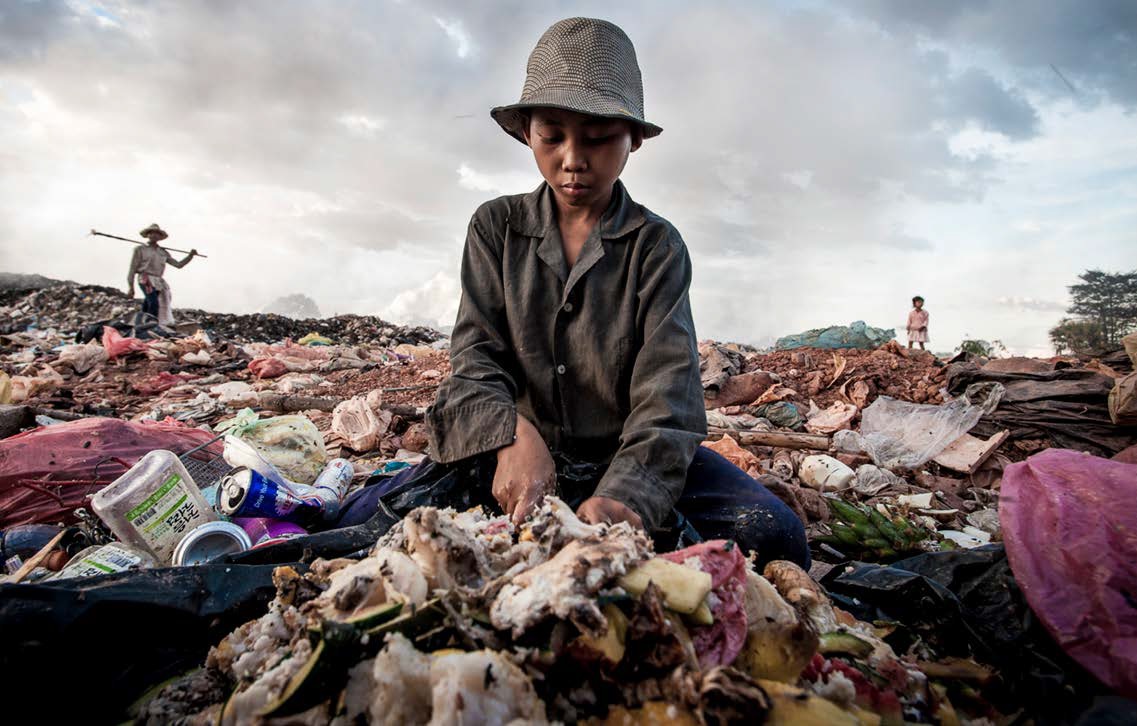Anlong Pi
Publish date 26-09-2022

I was having lunch in the outdoor area of one of the many restaurants on Pub Street, the busiest street in Siem Reap in Cambodia. In a relaxed atmosphere, surrounded by tourists and small groups of travelers, I noticed some children who, waiting to finish eating, timidly approached my table. They dragged large sacks, disproportionate to their small size and age; they must have been 8 years old or less. I thought they wanted leftover food I hadn't eaten or maybe water from half-left bottles, but they weren't interested in food and, trying to make themselves understood by gestures, they asked for empty glass cans and bottles or paper napkins . In an orderly manner they then placed the "booty" inside the bags, meticulously subdividing the various materials into a sort of separate collection.
This intrigued me so much that after a few days, I did some research and reached the place where these children lived with their families. I couldn't believe what I was seeing with my own eyes: I was in a landfill, Anlong Pi, the Siem Reap landfill. Twenty kilometers along National Road 6, there is a small village known by local NGOs as "Siem Reap's dirty little secret", a dilapidated slum built around the edge of a well. About two hectares of land filled with garbage produced in the city.
In this hell, entire families live and work every day sifting the scraps in the hope of finding a glass bottle or tin can. Garbage for all of us, but not for the inhabitants of Anlong Pi who are hoping for the good fortune of reselling it for 2,000 Riel corresponding to 50 cents per bag.
«They pay better for glass bottles, plastic comes later. If you are fast you can earn even a dollar a day »Sokhim tells me, the only guy I can talk to in English. They wear rubber boots and work with their faces wrapped in heavy rags to protect themselves from the unbearable stench.
A group of about 20 children, with sticks ending in hooks, surrounds the truck that has just arrived. They form two neat rows. The little ones are immersed up to their waist in a pile of garbage. As the truck opens the tailgate, they dive, regardless of the danger, to collect the plastic and glass to be deposited in the bags.
They spend up to 14 hours a day searching the waste for glass, plastic and metal for resale. Between the smoke of burning waste, the flies and the nauseating smell, the words take on new meanings. This is where one child defined the word happiness as "Seeing the sun shine every day."
In the general desolation, however, a light of hope is glimpsed. In January 2012, Togh Main opened The Anlong Pi Free school, which currently offers free English courses to 350 local children between the ages of 5 and 18. The school's goal is to improve children's chances of escaping poverty and building a decent future through education.
Roberto Cristaudo
NP Maggio 2022







